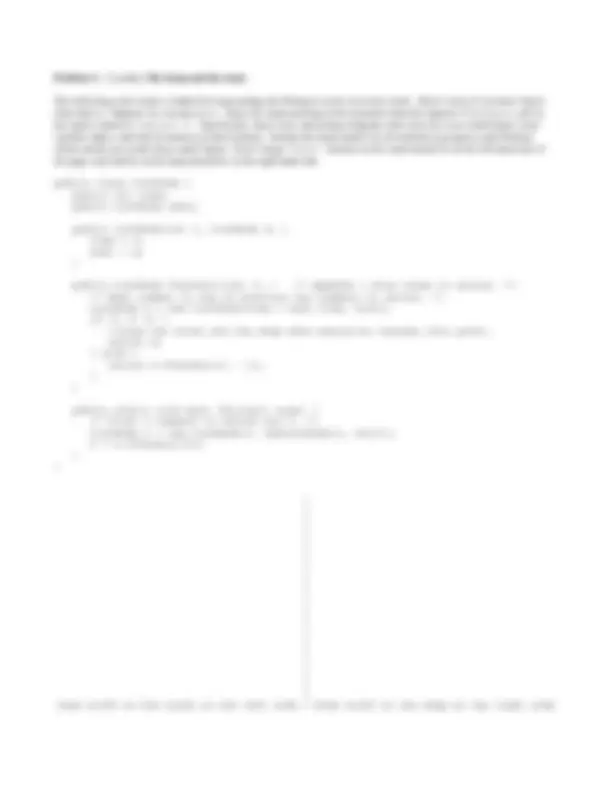





Study with the several resources on Docsity

Earn points by helping other students or get them with a premium plan


Prepare for your exams
Study with the several resources on Docsity

Earn points to download
Earn points by helping other students or get them with a premium plan
Community
Ask the community for help and clear up your study doubts
Discover the best universities in your country according to Docsity users
Free resources
Download our free guides on studying techniques, anxiety management strategies, and thesis advice from Docsity tutors
Main points of this exam paper are: Fitful Sleep, Following Code, Changing Just, Fragments Print, Code Fragments, Box-And-Pointer Diagram, Doubly-Linked List, Negative Numbers, Input Array, Number Counts
Typology: Exams
1 / 5

This page cannot be seen from the preview
Don't miss anything!




Problem 1. (6 points) Java bugs.
After you finished studying late last night, you fell into a fitful sleep and dreamt the following code. Unfortunately, you wrote four buggy lines. Fix them, so that all three methods work correctly. Each fix should involve changing just part of a line of code. The fact that everything is public does not count as a bug.
public class Quantity { public String thing; // The thing being measured. public double amount; // Its numerical quantity.
// Constructor. public Quantity(String thingString, double amount) { thing = thingString; amount = amount; }
// Constructor for thing with quantity 100. Calls the other constructor. public Quantity(String thingString) { Quantity(thingString, 100.0); }
public static void main(String[] args){ Quantity q = Quantity(“I love Java this much: ”); System.out.println(this.thing + this.amount); } }
Problem 3. (7 points) The heap and the stack.
The following code creates a linked list representing the Fibonacci series in reverse order. (Don’t worry if you don’t know what that is.) Suppose we execute main. Draw the stack and heap at the moment when the topmost fibonacci call on the stack is about to “return n”. Specifically, draw a box-and-pointer diagram with a box for every stack frame, local variable object, and field in memory at that moment. Include the stack frames for all methods in progress, and illustrate which entities are inside those stack frames. Don’t forget “this”. Entities on the stack should be on the left-hand side of the page, and entities on the heap should be on the right-hand side.
public class ListNode { public int item; public ListNode next;
public ListNode(int i, ListNode n) { item = i; next = n; }
public ListNode fibonacci(int i) { /* Appends i more terms to series. / / Next number is sum of previous two numbers in series. */ ListNode n = new ListNode(item + next.item, this); if (i <= 1) { //Draw the stack and the heap when execution reaches this point. return n; } else { return n.fibonacci(i – 1); } }
public static void main (String[] args) { /* First 2 numbers in series are 1. */ ListNode n = new ListNode(1, newListNode(1, null)); n = n.fibonacci(3); } } | | | | | | | | | | | | | | | | | |
Draw stuff on the stack on the left side | Draw stuff on the heap on the right side
Problem 4. (5 points) Creating a Doubly-Linked List.
Write a method called makeList in the DListNode class below. makeList takes an array counts of ints, constructs a doubly-linked list, and returns the list’s first DListNode. The list is not circularly linked and does not have a sentinel node. There’s no DList class. In the returned list, the first counts[0] items are the number counts[0], the next counts[1] items are the number counts[1], etc. For example, if the input array is [ 3 5 1 ], then the output
linked list is. Your solution should manipulate next and prev pointers directly. If you all any other methods, you must include them here. Assume there are no negative numbers in the array. Do not construct another array.
public class DListNode { public int item; public DListNode prev, next;
public DListNode(int i, DListNode p, DListNode n) { item = i; prev = p; next = n; }
public static DListNode makeList(int[] counts) {